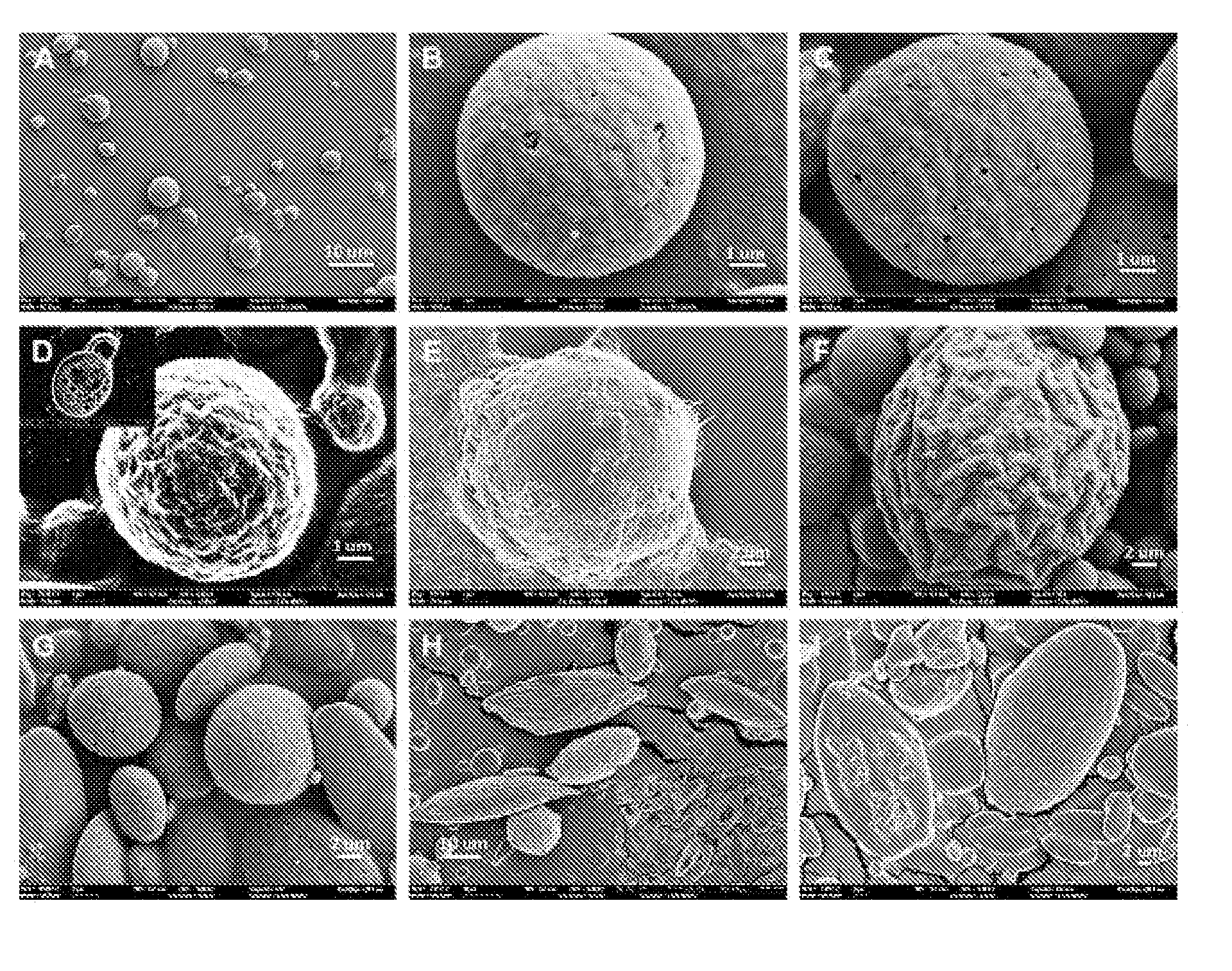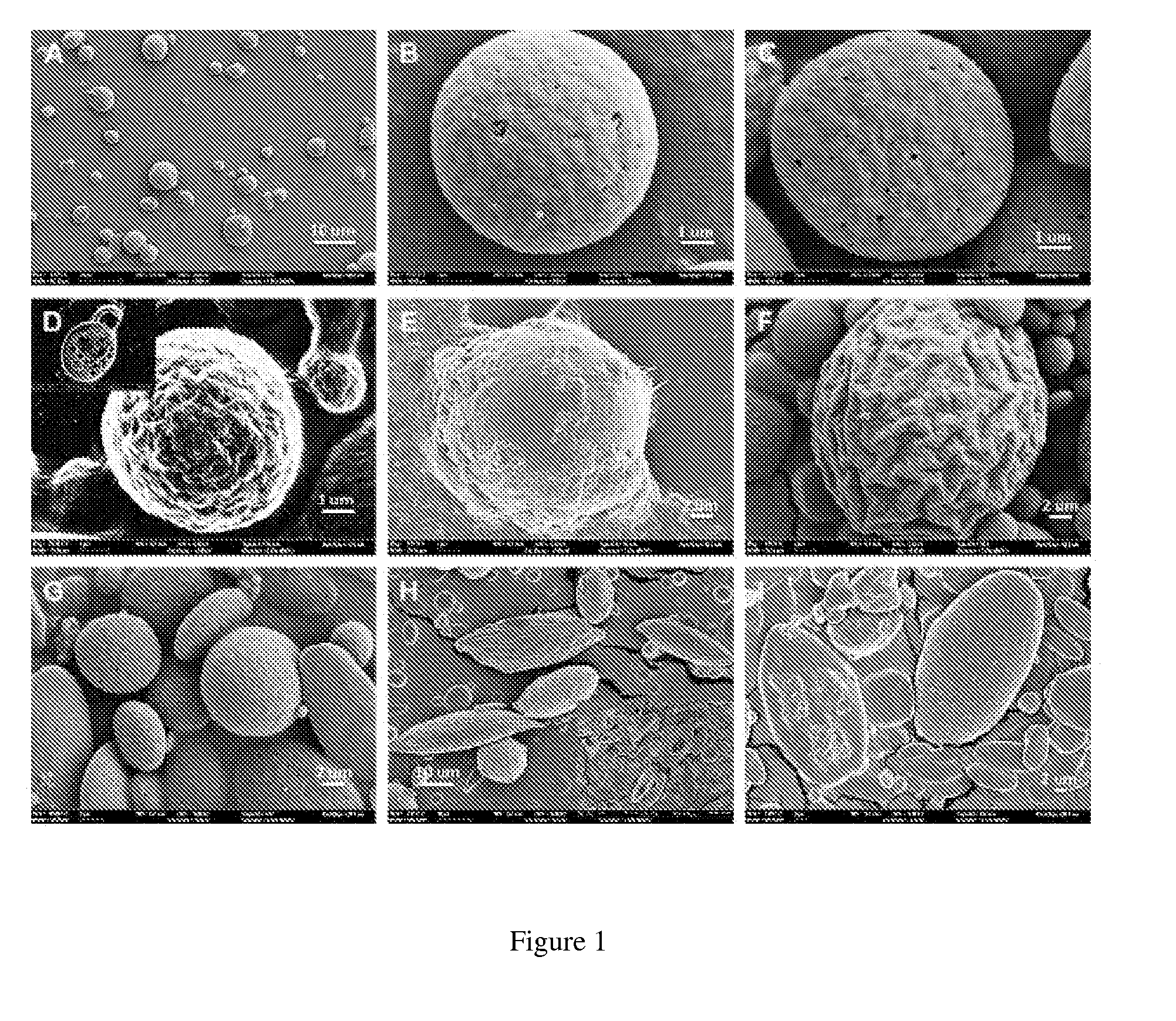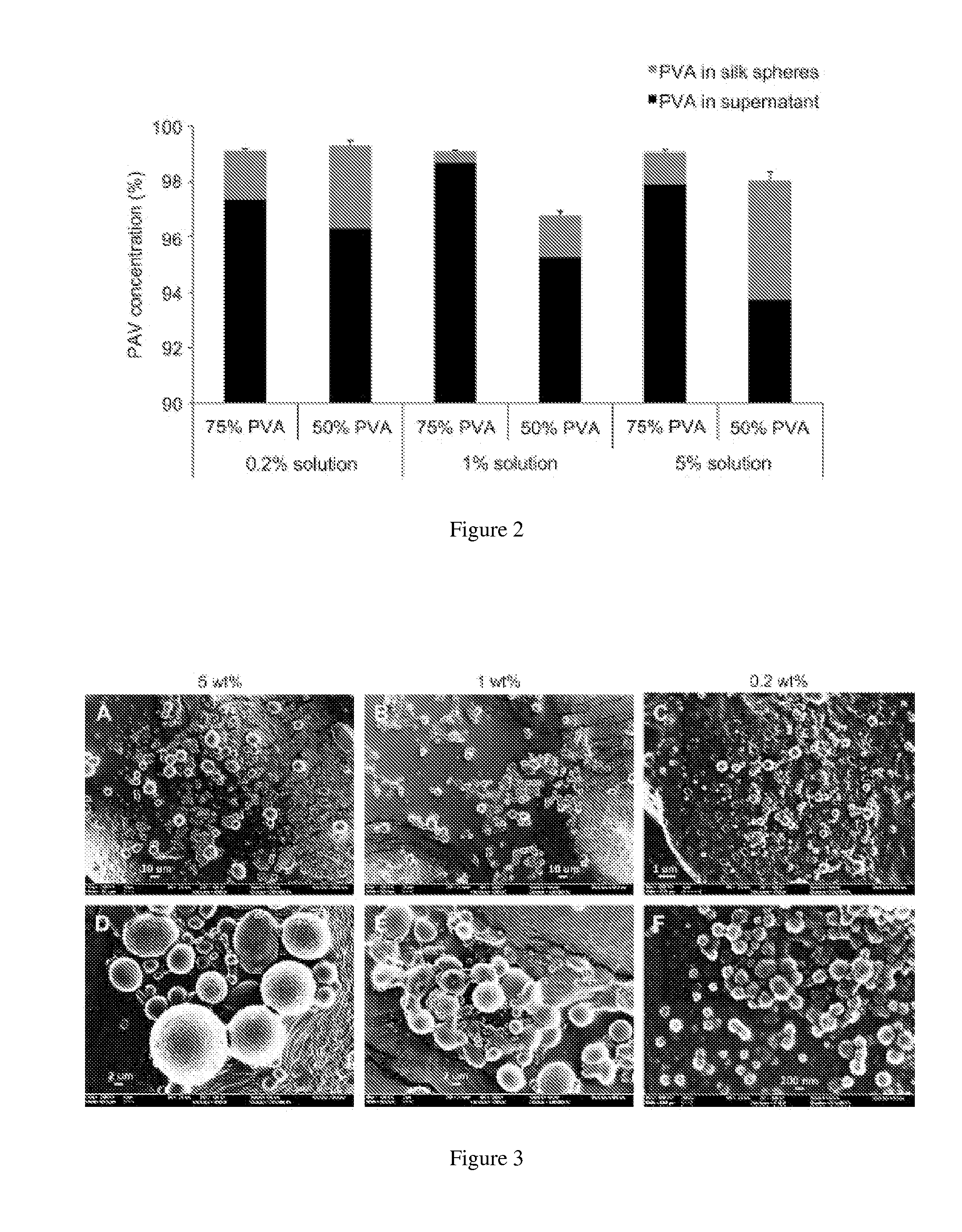Silk nanospheres and microspheres and methods of making same
a technology of nano-spheres and micro-spheres, which is applied in the field of making same, can solve the problems of denaturation of proteinaceous or other acid-sensitive drugs, inherent limitations of many of these polymers, and achieve the effects of convenient, safe, and drug-amenabl
- Summary
- Abstract
- Description
- Claims
- Application Information
AI Technical Summary
Benefits of technology
Problems solved by technology
Method used
Image
Examples
example 1
Silk Fibroin Purification
[0135]Polyvinyl alcohol (PVA, average mol wt 30,000-70,000), Rhodamine B, protease XIV, and all other chemicals were purchased from Sigma-Aldrich (St. Louis, Mo.); Tetramethylrhodamine conjugated bovine serum albumin (TMR-BSA) and Tetramethylrhodamine conjugated dextran (TMR-Dextran) were from Invitrogen (Carlsbad, Calif.). Ultrapure water from the Milli-Q® Ultrapure Water Purification Systems (Millipore, Billerica, Mass.) was used in all the examples. Silk fibroin aqueous stock solutions were prepared as described previously. Sofia et al., 54 J. Biomed. Mater. Res. A 139-48 (2001). Briefly, cocoons of B. mori were boiled for 20 min in an aqueous solution of 0.02 M sodium carbonate, and then rinsed thoroughly with pure water. After drying, the extracted silk fibroin was dissolved in a 9.3 M LiBr solution at 60° C. for 4 hr, yielding a 20% (w / v) solution. The resulting solution was dialyzed against distilled water using Slide-A-Lyzer® 3.5K MWCO dialysis casse...
example 2
Preparation of Silk / PVA Blend Films
[0136]Silk solutions having a concentration of 0.2 wt %, 1 wt %, and 5 wt % were prepared as starting solutions to be mixed with PVA solutions. PVA solutions having a concentration of 0.2 wt %, 1 wt %, and 5 wt % were also prepared as starting solutions to be mixed with silk solutions. Different volumes of silk and PVA solutions were gently mixed in a glass beaker. During mixing, the total mass of silk and PVA in the blend solution was kept constant. Silk / PVA blend solution having 1 wt % silk and 4 wt % PVA was prepared by mixing 1 ml of 5 wt % silk starting solution and 4 ml of 5 wt % PVA starting solution, so that the weight ratio of silk and PVA in the blend solution was 20 / 80 and the total mass of silk and PVA in the blend solution was 250 mg. Silk / PVA blend solution having 2.5 wt % silk and 2.5 wt % PVA was prepared by mixing 2.5 ml of 5 wt % silk starting solution with 2.5 ml of 5 wt % PVA starting solution, so that the weight ratio of silk a...
example 3
Preparation of Silk Nano- and Microspheres
[0140]The dried silk / PVA blend films from one of the blend solutions, prepared according to Example 2, were dissolved in 30 ml of ultrapure water in a 50 ml centrifuge tube under 10 min of gentle shaking at room temperature. The tubes were centrifuged for 20 min in a Sorvall® High-Speed Centrifuge (Thermo Scientific, Waltham, Mass.) at 16,000 rpm, 4° C. The supernatant was carefully discarded and the pellets were suspended in 30 ml of ultrapure water and were centrifuged again. To disperse the clustered silk spheres, the precipitated final pellets were suspended in 2 ml of ultrapure water, sonicated at 1% amplitude for 15 sec with a Branson ultrasonic cell disruptor. The resulting silk micro- or nanosphere suspension was then used for further characterizations.
PUM
| Property | Measurement | Unit |
|---|---|---|
| Fraction | aaaaa | aaaaa |
| Fraction | aaaaa | aaaaa |
| Power | aaaaa | aaaaa |
Abstract
Description
Claims
Application Information
 Login to View More
Login to View More - R&D
- Intellectual Property
- Life Sciences
- Materials
- Tech Scout
- Unparalleled Data Quality
- Higher Quality Content
- 60% Fewer Hallucinations
Browse by: Latest US Patents, China's latest patents, Technical Efficacy Thesaurus, Application Domain, Technology Topic, Popular Technical Reports.
© 2025 PatSnap. All rights reserved.Legal|Privacy policy|Modern Slavery Act Transparency Statement|Sitemap|About US| Contact US: help@patsnap.com



